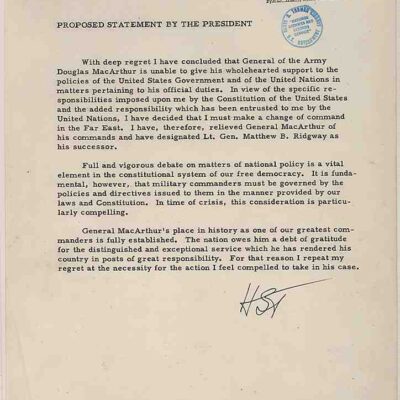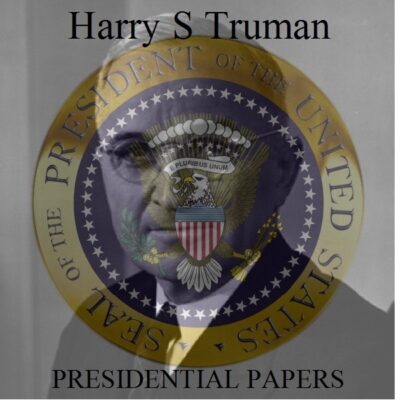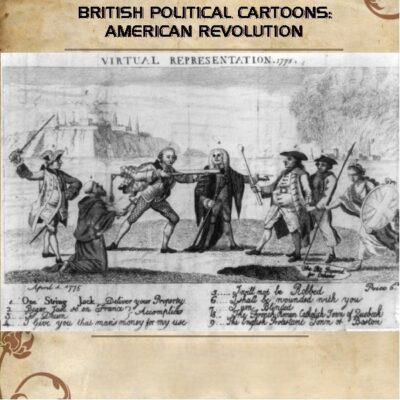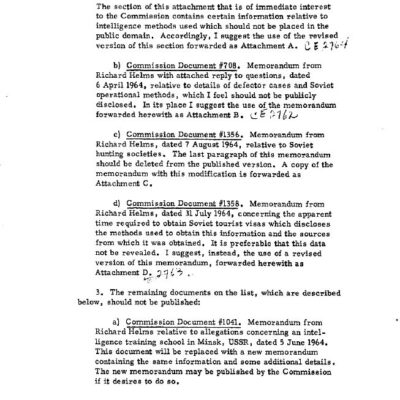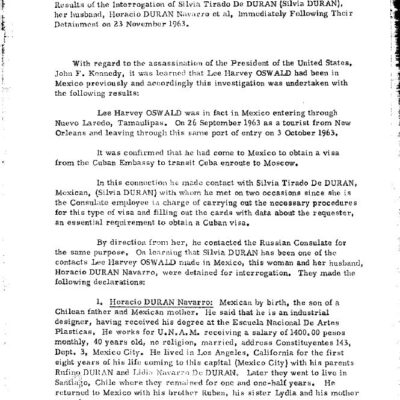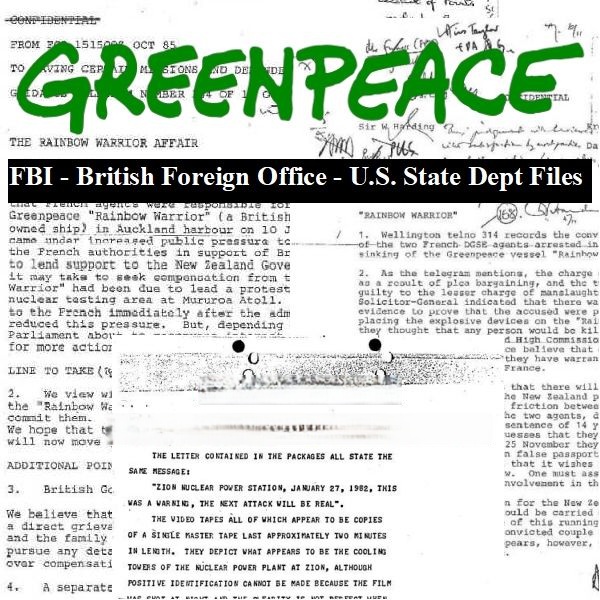
Greenpeace FBI – British Foreign Office – State Department – New Zealand SIS Files
$19.50
Description
Greenpeace: From Formation to the Rainbow Warrior Sinking
1970:
- “Don’t Make A Wave Committee” Formation: A group of Canadian and American environmentalists forms this committee, attempting to prevent a nuclear test on Amchitka Island, Alaska.
1971:
- Greenpeace Foundation: The “Don’t Make A Wave Committee” leads to the official formation of Greenpeace in Vancouver, British Columbia, Canada.
1973:
- August 22: A U.S. State Department telegram reports on Canadian protests regarding the French seizure of a Greenpeace vessel.
- October 3: A world press briefing mentions the New Zealand government’s protest over the French seizure of the anti-nuclear protest ship, Greenpeace III.
1974:
- May 28: Two U.S. State Department telegrams mention a Greenpeace official’s appearance at an anti-whaling project press conference.
- June 10: A U.S. State Department telegram concerns French nuclear tests at Mururoa.
1978:
- Rainbow Warrior Purchase: Greenpeace acquires a 33-year-old, 40-meter fishing trawler, the Sir William Hardy, for £40,000. It is refitted and renamed the Rainbow Warrior.
1980:
- Greenpeace White House Demonstration: Greenpeace demonstrates in front of the White House, leaving a 55-gallon drum reportedly containing radioactive uranium tailings on the sidewalk. U.S. Army Explosive Ordinance detachment and Nuclear Emergency Search Team investigate.
1983:
- FBI Surveillance of Rainbow Warrior: FBI memos indicate surveillance of Greenpeace’s plans for the Rainbow Warrior, including actions against Japanese gill net usage and Soviet whaling.
1985:
- July 10 (Just before midnight): Rainbow Warrior Sinking: Two explosions sink the Rainbow Warrior in Auckland, New Zealand harbor. Underwater charges, placed by frogmen, create two holes in the hull. All crew escape except for Fernando Pereira, who drowns.
- July 10 onwards:Witness Accounts and Police Investigation: Auckland boating club members observe a man in scuba gear driving away from the harbor in a van, noting its registration. Police trace the van to a rental firm and a Swiss couple, “Turenge.”
- “Turenge” Interview and Charges: Within 30 hours of the bombing, the “Turenges” are interviewed and charged.
- Ouvea Yacht Link: Forestry workers report a suspicious meeting between occupants of a van and a station wagon, later linked to the charter yacht Ouvea, believed to have brought explosives into New Zealand. Warrants are issued for the Ouvea crew, but they are not found.
- August:French Agent Identification: It is revealed that “Turenge” is the alias for Dominique Prieur and Alain Mafart, agents of the French Secret Service (DSGE).
- Discovery of More Agents: New Zealand Police discover up to 11 French agents were involved in the Rainbow Warrior operation.
- French Initial Denials: A French report admits agents were in New Zealand but denies responsibility for the bombing.
- September:French Admissions and Resignation: After further denials, French Defence Minister Monsieur Hernu resigns.
- September 22: French Prime Minister Laurent Fabius admits French agents were responsible for the bombing.
- French Presidential Justification: French President François Mitterrand claims the agents, being military members acting under orders, are not responsible for their actions.
- September (World Press Summaries): U.S. Department of State files include summaries of press reporting on the Rainbow Warrior incident.
- November 4: Mafart and Prieur plead guilty to manslaughter and willful damage in an Auckland court and are sentenced to 10 years imprisonment.
- Post-Sentencing Pressure: The French government applies pressure on New Zealand, including threats of sanctions against New Zealand produce.
- UN Mediation: The United Nations Secretary-General mediates between France and New Zealand.
- UN-Brokered Agreement: Mafart and Prieur are to be removed to Hao Atoll in French Polynesia for three years. France is to apologize to New Zealand and pay NZ$13 million in compensation.
- Subsequent French Pressure: Renewed pressure from France, including threats to hinder New Zealand’s trade access to the European Economic Community, leads to Mafart and Prieur leaving Hao Atoll before their three years are up and returning to France.
- Rainbow Warrior Scuttling: The Rainbow Warrior, deemed irreparable, is towed from Auckland and scuttled near the Cavalli Islands, Northland, New Zealand, to become an artificial reef.
- British Diplomacy: British Foreign and Commonwealth Office files show their diplomatic role in negotiations between France and New Zealand and concern over press speculation of British involvement.
1994:
- April: A U.S. Ambassador to Brazil memo to the State Department mentions Greenpeace’s interest in the troubled construction of the Angra II nuclear power plant in Brazil.
1995:
- November 15: Thomas E. McNamara, Assistant Secretary of State for Political-Military Affairs, testifies before the House Subcommittee on Asia and the Pacific, mentioning Greenpeace and issues with nuclear testing at Mururoa Atoll.
1996:
- October: New Zealand Security Intelligence Service (SIS) creates the “SLIM Report Rainbow Warrior,” summarizing information about the attack.
2001:
- Greenpeace and Missile Defense: FBI memos concern the possibility of Greenpeace interfering with National Missile Defense Initiative tests.
2002:
- End of FBI Narrative Files: The last FBI narrative file mentioned in the collection dates to this year.
2010:
- September: The U.S. Justice Department’s Office of the Inspector General releases “Review of the FBI’s Investigations of Certain Domestic Advocacy Groups,” including Greenpeace.
- Greenpeace U.S.A. Tax Returns: Form 990s for Greenpeace U.S.A. begin to be covered in the collected material (2010, 2011, 2012).
2011, 2012:
- Greenpeace U.S.A. Tax Returns: Form 990s for these years are included in the collected material.
2013:
- End of Collected Material: The latest date for collected material, specifically the USDA Intelligence Reports, extends to this year.
2017:
- SLIM Report Release: The New Zealand SIS “SLIM Report Rainbow Warrior” is released.
Cast of Characters
- Fernando Pereira: A Dutch photographer who tragically drowned when the Rainbow Warrior was sunk by French agents on July 10, 1985.
- Dominique Prieur: A French Secret Service (DSGE) agent, operating under the alias “Turenge,” who was involved in the sinking of the Rainbow Warrior. She was apprehended, pleaded guilty to manslaughter and willful damage, and sentenced to 10 years imprisonment in New Zealand. Later transferred to Hao Atoll and eventually returned to France.
- Alain Mafart: A French Secret Service (DSGE) agent, operating under the alias “Turenge,” who was involved in the sinking of the Rainbow Warrior. He was apprehended, pleaded guilty to manslaughter and willful damage, and sentenced to 10 years imprisonment in New Zealand. Later transferred to Hao Atoll and eventually returned to France.
- Monsieur Hernu: The French Defence Minister who resigned following the admission that French agents were responsible for the Rainbow Warrior bombing.
- Laurent Fabius: The Prime Minister of France who, on September 22, 1985, admitted that French agents had been responsible for the sinking of the Rainbow Warrior.
- François Mitterrand: The President of France who claimed that the French agents responsible for the Rainbow Warrior bombing could not be held responsible for their actions because they were members of the military and acted under orders.
- Thomas E. McNamara: Assistant Secretary of State for Political-Military Affairs in the United States, who testified before the House Subcommittee on Asia and the Pacific in November 1995 regarding nuclear issues in the South Pacific, mentioning Greenpeace.
Greenpeace FBI – British Foreign Office – State Department – New Zealand SIS Files – USDA Intelligence Reports
869 pages of FBI, British Foreign and Commonwealth Office, U.S. State Department files and other material, covering Greenpeace, particularly the Rainbow Warrior incident, dating from 1973 to 2013.
In 1970, a group of Canadian and American environmentalists formed the “Don’t Make A Wave Committee.” They unsuccessfully sought to prevent a nuclear test under the Alaskan island of Amchitka. This led to the formation of Greenpeace, an international environmental organization founded in Vancouver, British Columbia, Canada in 1971. Greenpeace describes itself as “an independent, campaigning organization which uses non-violent, creative confrontation to expose global environmental problems, and to force solutions for a green and peaceful future.”
Greenpeace is known for its use of publicity campaigns and acts of civil disobedience to stop atmospheric and underground nuclear testing. Greenpeace also sought an end to high seas whaling and U.S. offshore oil drilling. Greenpeace in later years focused on other environmental issues, such as bottom trawling, global warming, ancient forest destruction, and genetic engineering. Greenpeace has national and regional offices in 45 countries, all of which have affiliation with the Amsterdam-based Greenpeace International. The global organization receives its income through the individual contributions of an estimated 2.8 million financial supporters, as well as from grants from charitable foundations.
In 1978, Greenpeace paid £40,000 for a 33-year-old, 40-metre fishing trawler named the Sir William Hardy. This ship was refitted and renamed the Rainbow Warrior. The ship was used to interfere with the Icelandic whaling fleet, the dumping at sea of toxic and radioactive waste, and various fishing practices. In 1985, the Rainbow Warrior traveled to the vicinity of Moruroa atoll, the site of French nuclear testing. Just before midnight on July 10, 1985, two explosions rocked the Auckland, New Zealand harbor, sinking the Rainbow Warrior. Underwater charges had been placed by frogmen on the Rainbow Warrior’s hull, blowing two holes in the ship. The Rainbow Warrior sank almost immediately. All the crew managed to escape, except for a Dutch photographer, Fernando Pereira, who drowned.
On the night of the explosions members of an Auckland boating club saw a man wearing scuba diving gear in an inflatable dinghy, come ashore and tie-up the dinghy, then drive away in a van. The club members were suspicious and took note of the registration number of the vehicle. The police were able to trace the van through a rental firm to a Swiss couple using the name “Turenge”. Within 30 hours of the bombing the “Turenges” were interviewed by the police, and then charged. In the meantime, forestry workers had reported a suspicious meeting between occupants of a van and a station wagon, which was later linked to a charter yacht, the Ouvea. Warrants were issued for the crew of the yacht Ouvea, which had been used to bring the explosives and other equipment into New Zealand, but no trace of the yacht or crew could be found.
A month after the bombing, it was revealed that the “Turenges” were Dominique Prieur and Alain Mafart, agents of the French Secret Service, the Direction Generale de la Securité Exterieure (DSGE). New Zealand Police later discovered that up to 11 French agents had entered New Zealand as part of the Rainbow Warrior operation. A French report came out admitting that French agents had been in New Zealand but denied they had carried out the bombing.
Following a further round of official denials, Monsieur Hernu, the Defence Minister resigned and on September 22, Prime Minister Laurent Fabius admitted that French agents had been responsible. French President François Mitterrand claimed that because they were members of the military and had acted under orders, they could not be held responsible for their actions. On 4 November 1985, Mafart and Prieur appeared in an Auckland court, where they pleaded guilty to charges of manslaughter and willful damage and were sentenced to 10 years imprisonment.
Pressure was put on New Zealand by the French government, including threats to impose sanctions against New Zealand produce. The United Nations Secretary-General agreed to mediate between the two countries and decided that Mafart and Prieur should be removed to Hao Atoll in French Polynesia, to stay there for the next three years. France was to apologize to New Zealand and pay NZ$13 million in compensation. After renewed pressure from France, including threats to work against New Zealand trade access to the European Economic Community, the two agents left Hao Atoll before the three years was up, and returned to France.
The Rainbow Warrior was refloated but could not be repaired. It was towed from Auckland and scuttled near the Cavalli Islands, off the Northland New Zealand coast, to become an artificial reef for marine life.
Material includes:
FBI FILES
120 pages of FBI files. Files contain approximately 97 pages of narrative files, dating from 1980 to 2002.
Files contain: Memos concerning a 1980 Greenpeace demonstration in front the White House, in which a 55-gallon drum was left on the sidewalk in front of the White House, reported as containing radioactive sand known as uranium tailings. A United States Army Explosive Ordinance detachment and a Nuclear Emergency Search Team were deployed to investigate the barrel’s contents. Memos on surveillance of Greenpeace plans for the Rainbow Warrior in 1983, including action against Japanese gill net usage and Soviet whaling. A teletype concerning a Greenpeace mock attack on the Zion Nuclear Station at Zion, Illinois. Memos from 2001 concerning the possibility of Greenpeace interfering with National Missile Defense Initiative tests.
NEW ZEALAND SECURITY INTELLIGENCE SERVICE REPORT – SLIM REPORT RAINBOW WARRIOR
A 13-page New Zealand Security Intelligence Service “slim” report created in October 1996 summarizing information about the Rainbow Warrior attack, The report was released in 2017.
UNITED KINGDOM FOREIGN AND COMMONWEALTH OFFICE FILES
210 pages of British Foreign and Commonwealth Office files dating from 1985.
The Foreign and Commonwealth Office, more commonly known as the Foreign Office or the FCO, is the United Kingdom government department responsible for promoting the interests of the United Kingdom abroad. The files show the relationship between Britain and France after the sinking. Files show the British diplomatic role in negotiations between France and New Zealand after the Rainbow Warrior incident. Correspondences convey concern by the British government of press accounts that French officials were commenting on possible British involvement in the sinking of the Rainbow Warrior.
UNITED STATES DEPARTMENT OF STATE FILES
78 pages of U.S. Department of State files containing some mention of Greenpeace.
Contents include: An August 22, 1973 State Department telegram concerning Canadian protest over the French seizure of a Greenpeace vessel. An October 3, 1973 world press briefing, that includes the government of New Zealand’s protest over the French seizure of the ant-nuclear protest ship the Greenpeace III. Two May 28, 1974 telegrams mentioning the appearance of a Greenpeace official at an anti-whaling project press conference. A June 10, 1974 State Department telegram concerning French nuclear tests at Mururoa. World Press summaries from September 1985. Includes a summary of current press reporting on the Rainbow Warrior incident. An April 1994 memorandum sent by the United States ambassador to Brazil, to the State Department, concerning the troubled construction of the Angra II nuclear power plant in Brazil. Mention is made of Greenpeace’s interest in Angra II. A transcript of the November 15, 1995 testimony by and questions and answers of Thomas E. McNamara, Assistant Secretary of State for Political-Military Affairs, before the House Subcommittee on Asia and the Pacific, concerning nuclear issues in the South Pacific. Mention is made of Greenpeace and problems with the nuclear testing at Mururoa Atoll.
USDA INTELLIGENCE REPORTS ON GREENPEACE ACTIVITIES
123 selected pages of United States Department of Agriculture bulletins titled, “Global Agriculture Information Network (GAIN) Report,” covering or mentioning Greenpeace activity and influence. This series consists of reports that provide information on a wide range of subjects pertaining to international agricultural trade, production, and policies. Much of the material deals with GMOs [Genetically Modified Organisms]. Individual reports have title such as:
Is Greenpeace Leadership Changing Gears on Biotech?
Aggressive Greenpeace Campaign against GMO Labeled Food Products Germany
Greenpeace occupies German Turkey Farm
Greenpeace Finds GM Soybean Products in Frozen Chicken Sticks, Austria
GMO Activities by Non Government Organizations – Greenpeace Campaign Fizzles, The Netherlands
Major Food Retailers Say “NO” to Biotech Foods, Austria
Three UK supermarkets begin conversion to Non-GM, Animal Feed, United Kingdom
MISCELLANEOUS MATERIAL
Review of the FBI’s Investigations of Certain Domestic Advocacy Groups – A September 2010 report by the United States Justice Department’s Oversight and Review Division, Office of the Inspector General. The report is review of an investigation which took place in response to congressional inquiries that raised concerns over whether the Federal Bureau of Investigation (FBI) had improperly targeted domestic advocacy groups for investigation based solely upon their exercise of First Amendment rights. Groups covered include Greenpeace; The Thomas Merton Center of Pittsburgh, PA; People for the Ethical Treatment of Animals (PETA); The Catholic Worker; Glen Milner, (an individual); and The Religious Society of Friends (the “Quakers”).
Greenpeace U.S.A. Tax Returns – Form 990’s (Return of Organization Exempt from Income Tax for the years 2010, 2011 and 2012.
